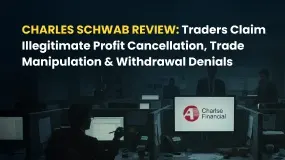简体中文
繁體中文
English
Pусский
日本語
ภาษาไทย
Tiếng Việt
Bahasa Indonesia
Español
हिन्दी
Filippiiniläinen
Français
Deutsch
Português
Türkçe
한국어
العربية
How to trade in a bear market
Abstract:Bear markets may signal receding economic conditions and investor uncertainty, but they also contain opportunities. Get bear market insights, including the possible outcomes when using bear market trading strategies.

A bear market is a period during which prices fall significantly following recent highs – this is normally indicated by a minimum price drop of 20%. When this happens, investors may opt to withdraw their money to avoid fading yields or cut their losses. With negative investor sentiments on the rise, prices are likely to tumble even further, making it risky to trade in a bear market. This can also spiral into higher unemployment levels, a decline in consumer spending and deflation.
Like in a bull market, the occurrence of a bear market is influenced by supply and demand. In a bear market, supply is high and demand is low, the inverse of which applies to bull markets.
Bear market example
Heres a visualisation of the bear market definition:

This chart shows the price movements of the FTSE Mid 250. The 20% decline, which stretches over approximately three weeks, from February 2020 to March 2020, marks the occurrence of a bear market. This bear market was triggered by the Covid-19 pandemic. The chart also depicts the beginning of the recovery period after the bear market had run its course.
With the price action having declined beyond 20% from recent highs, this fulfils the definition of a bear market.
How to trade in a bear market
With us, you can trade in a bear market, speculating on price movements using CFDs.
Short-selling enables traders to speculate on a falling share price, and if the prediction is correct, make a profit. Its important to note that even in bear markets, the price action could go either way. So, if the share price happens to rise, a loss will be incurred.
Top 5 bear market trading strategies
Bear market strategies can guide you in navigating through trading when negative performance is coupled with high investor uncertainty. Here are some popular strategies to keep in mind:
Take a short-selling position
As the saying goes, ‘the trend is your friend’. Short-selling is a way in which you can follow the directional momentum in a bear market – you‘d take a sell position (go short), by speculating on falling market prices. If your prediction pans out, you’ll make a profit. But even in bear markets, prices can move either way. So, youll incur a loss if the price action moves against your position.
Find a good entry position
When the decline in price hits the 20% mark, it‘s official - bear market territory has been entered. If looking to short-sell, for example, this could be a good point to open the position. Even though the price is likely to continue dropping, it’s impossible to know for how long it‘ll keep falling, or whether it’ll continue to drop at all. If it does continue, theres also no way of knowing how long the decline will last (the next strategy addresses this).
Take profits at regular intervals
The probable price action direction in a bear market is descending. This could be an opportunity to lock in profits regularly, but its important to remember that prices can move up every now and then, even in bear markets.
Trade indices and ETFs
While indices such as the FTSE 100 represent a basket of stocks by company market capitalisation, exchange traded funds (ETFs) track the performance of a market, for example: a countrys stocks, an index or sector. With bear markets often being triggered by supply and demand factors, and in turn impacting economic conditions, such broad exposure to related assets offers an opportunity to benefit from the expected similarities in price movements. Naturally, if the actual price movements go against the grain of expectations, this would spell losses.
Set a stop loss order
A stop-loss order is an instruction that enables you to exit a position automatically once a certain, less favourable price is reached. Therefore, if you‘re short-selling, your stop-loss order would be at a price that is higher than the one you opened your position at, and vice versa if you’re going long. This risk management strategy helps you cut losses if the market moves against you.
Though these strategies are based on past performance, they dont guarantee future results.
Find out which asset classes offer the best opportunities in a bear market
How to start trading with us
Create an account or log in
Find the market you want to trade on our trading platform
Select ‘buy’ or ‘sell’ in the deal ticket
Set your position size and take steps to manage your risk
Open and monitor your position
Bear market: a period of a continuing decline in the prices of a market
Economic recession: a general decline in economic performance, often signified by two consecutive quarters with negative growth or reduction in the gross domestic product (GDP).
Cyclical: a cyclical bear market is set off by rising interest rates and high inflation rates at the end of a business cycle
Structural: a structural bear market occurs when a financial bubble or other economic imbalance collapses, example: the global financial crisis
Event-driven: as the name suggests, an event-driven bear market is caused by a specific, significant event, eample: Covid-19
A bear market occurs when theres a significant fall in prices, typically at least 20%, following recent highs
Bear markets are linked to a receding economy and a market outlook that is chiefly negative
Profiting in a bear market may seem ironic and unlikely, but opportunities do exist
While there are always risks involved in trading activity, buying and owning physical assets in a bear market is particularly risky
Bear market trading strategies can be useful as they‘re based on the past performance, but they don’t guarantee future results
Bear markets and recessions are intrinsically linked, but differ fundamentally
Knowing the differences between bear and bull markets is crucial as this can affect the success of your trading strategies
With us, you‘ll trade with leverage – this means you’ll only need a small deposit, known as margin, to gain full exposure. Your profits can be magnified by leverage, but so can your losses. So, its important to manage your risk appropriately beforehand.
Bear market vs economic recession: whats the difference?
Bear markets are closely associated with economic recessions as either tend to trigger the other. Plus, they are similar in several other ways. Still, they differ fundamentally.
The intrinsic link between these concepts is evident in factors such as their causes and effects, for example: geopolitical crises, pandemics, investor sentiments and consumer spending.
What are the different types of bear markets?
There are three types of bear markets – they're classifications of what brought the downward-trending prices on.
Bear markets vs bull market: what are the differences?
Knowing the differences between a bear market and a bull market is important as this contributes to the effectiveness of trading strategies. If a short-term correction of a bull market is confused with a bear market, for instance, the expected outcome will probably be drastically different.
Here are some of the main differences between bear and bull markets:
Bear market
Significant fall in a markets price of at least 20%
Supply is high and demand is low
Typically associated with a receding economy
Bearish sentiments are prominent due to the high loss potential on investments. With more investors withdrawing their money, the price could fall even lower
Profits are more likely to be realised from short-selling, and selling investments early in the bear market can help in cutting losses
Bull market
Upward-trending growth in a market that occurs over a prolonged period
Supply is low and demand is high
Typically linked to a sound economy
With high investor confidence, coupled with an increase in buying the physical, underlying asset, the upward trend could rise even more
High probability of making a profit from long positions

Trading in a bear market summed up

Disclaimer:
The views in this article only represent the author's personal views, and do not constitute investment advice on this platform. This platform does not guarantee the accuracy, completeness and timeliness of the information in the article, and will not be liable for any loss caused by the use of or reliance on the information in the article.
Read more

Charles Schwab Review: Traders Claim Illegitimate Profit Cancellation, Trade Manipulation & More
Have you been lured into the Charles Schwab app for trading on the back of outrageous profit claims by the broker? Did you fail to receive any of these? Does the broker deny withdrawals every time you request and cancel your forex trading account? Have you been victimized financially by its trade manipulation? Act before you are left with a NIL balance in your account. Many traders have questioned Charles Schwab customer service and many other operational executives for the aforementioned illegitimate trading activities. In this Charles Schwab review article, we have shared some of their comments. Read on!

AMP Futures Exposed: Traders Raise Alarms Over Illegitimate Account Blocks & Bad Customer Service
Has AMP Futures blocked your forex trading account? Does it fail to provide any explanation for this act? Do you face issues concerning deposits to your AMP Futures account? Is the customer service non-existent for any trading query you raise with it? You are not alone! Many traders have been facing these issues upon AMP Futures login. Some of them have commented on AMP Futures review platforms. In this article, we have shared some reviews that you can look at. Read on!

FXGlory Review: Vanishing Profits, Capital Scams & Withdrawal Charges Keep Annoying Traders
Does FXGlory remove all your forex trading account balances upon fund withdrawal requests? Or do you witness incorrect trading account balances after fund withdrawals? Does the Saint Lucia-based forex broker charge you for fund withdrawals? All these and many more scam-related complaints have been filed against the forex broker. In this FXGlory review article, we will discuss several complaints. Read on!

PINAKINE Broker Review: A Complete Look at Its Services and Risks
Finding a trustworthy broker from the huge and often confusing world of online trading options is one of the biggest challenges a trader faces. In this competitive market, PINAKINE Liquidity Limited has appeared, getting attention with promises of high leverage and zero-commission trading. However, a closer look shows important factors that every potential client must think about before investing. The most important thing to consider with PINAKINE is that it has no regulation. This fact completely changes how risky the broker is and has major effects on how safe your investments will be. This review gives a complete and fair examination based on information available to the public. We will break down its services, trading conditions, platform technology, and the possible risks involved, helping you make a fully informed decision.
WikiFX Broker
Latest News
Voices of the Golden Insight Award Jury | Tim Waterer, Chief Market Analyst of KCM Trade
Stonefort Securities Review: A Fair Look at Safety, Rules, and What Traders Say
Trump asks for meat packer probe over beef prices
BASF CEO: EU CO₂ Trading Is A "Destruction Mechanism" For European Industry
Prop Firm Scams: When ‘Getting Funded’ Costs You Everything
PINAKINE Broker Review: A Complete Look at Its Services and Risks
One-Click Access to Broker Official Group Chats & Exclusive VPS Benefits
Easy Money Doesn't Exist! High-Return Promise Turned into an RM44,000 Scam
FXGlory Review: Vanishing Profits, Capital Scams & Withdrawal Charges Keep Annoying Traders
Charles Schwab Review: Traders Claim Illegitimate Profit Cancellation, Trade Manipulation & More
Currency Calculator




